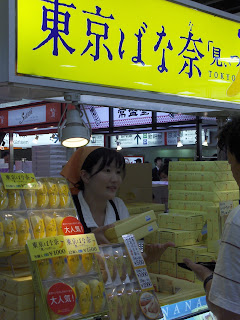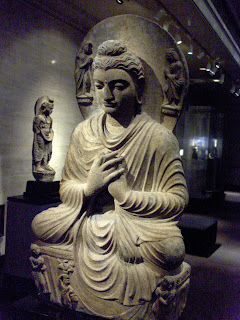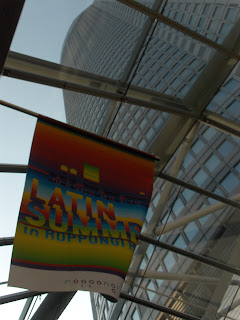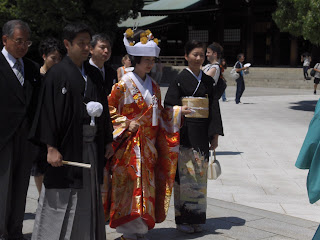 老照片–Lao Zhao Pian - is the title of a series of books published by Shantung PublicaLtion – 山东画报出版社 . It has been 10 years past since it first went to print in 1997. I bought my first copy in June 1998 老照片 - 第二辑, and at S$3.25 (RMB6.50), which was relatively cheap for a book of 130 odd pages and a good read.
老照片–Lao Zhao Pian - is the title of a series of books published by Shantung PublicaLtion – 山东画报出版社 . It has been 10 years past since it first went to print in 1997. I bought my first copy in June 1998 老照片 - 第二辑, and at S$3.25 (RMB6.50), which was relatively cheap for a book of 130 odd pages and a good read.The theme of the book is the story behind the old photographs, mainly contributed by the- 老百姓 -laobaixing - the common folks. Variously it has been described as recording the 野史 – yeshi - literary the history of the wilderness. Compared to the 正史 – zheng shi - which is the official history, 野史 – yeshi – is the unofficial history of the era. It is a record of personal history – the personal history with the family as the backdrop – and against the great historical events that unfolded in China then.
The bulk of the stories are from that era of China from the founding of New China in 1949 until the later half of 1970’s with– 改革开放- gaige kaifang – Deng’s reform and opening up to the outside world.
Many of the stories that happened during the period from 1966 to 1976 were comtemporous with Jung Chang’s - Wild Swan, or Nien Cheng’s – Life & Death in Shanghai. It is said that during the ten year period of the Great Proletariat Cultural Revolution – 无产阶级文化大革命 – the Chinese shut their doors tight and crazily beat each other up - 关起门来自己打自己 – guanqi men lai zijida ziji .
The book gave a good glimpse of life behind the Bamboo Curtain then. With Communist China backing the insurgents in this part of the world, there was limited contact with China then.
Many of the family links from the pre-Communist China had been cut off, and communication with the villages or relative back there was reduced to the occasional letters from China.
The old photographs that I grew up with of China were those of my two uncles from the maternal side. They were born in Ipoh, and studied in the local Yuk Choy Chinese school until they ‘return’ to China in the 1950/s in their youthful years.
This picture was taken in Beijing in 1955, and posted to eldest aunt - mum's sister - , most probably when they had a reunion in the capital.
The younger of the two uncle’s – 二舅- Erjiu – 2nd uncle returned to China in 1954, while the elder uncle – 大舅- Dajiu - returned to China three years or so earlier soon after the founding of New China – 新中国。
It was two years before I was born when the photo was taken. With the stories from mum of her brothers, the picture had been a part of my childhood memory. It had sub-consciously or otherwise shape my curiosity and fondness for China then.
During dinner time, mum would relate the stories of her brothers. She told us that 2nd uncle, did not tell anyone that he was going back to China, until the very last day he was to leave. His trip was sponsored by his schoolmates.
And mum would also tell of Dad’s youngest brother who left for China around that time. He said that Dad escorted uncle till Singapore. While on the last leg, Dad tried again to persuade him to stay and to follow him back to Ipoh, and not to go on the journey. However, he went.
What I had heard of was that, it was a period of conscription to join national service in the late 1940/s or early 1950/s and many of the youths who did not want to serve in the colonial army, decided to pack their bags to go to China.
Perhaps it was not so much a return to the land of their birth, for they were the 2nd or 3rd generation overseas Chinese, and were born in the South Seas – 南洋 - Nanyang。
For those who were educated in the Chinese medium schools, the cultural & ideological factors was an important elements that shaped their decisions, as it coincided then with the call from the New China to the overseas Chinese to help build a strong and prosperous ‘motherland’.
It was time for the - Romance of the New China . It must have been a great draw for the youth then to return to China then, for even with much persuasion they refused to stay behind but to pursue their dreams in helping to build a New China.
However, not long after they arrived, the New China would be embroiled in countless political campaigns, starting with the Great Leap Forward – 大跃进, the Anti-Rightist movement -反右派运动, and the Cultural Revolution. And the series of Lao Zhao Pian, 老照片- would provide the reader with glimpses of life in China first hand from those periods.
Postscript:
1. The most current edition June 2007 - found in the local bookstore – 长河书局 – Changhe Bookstore 桥南路 – South Bridge Road - - is priced at S$4.00 (RMB10.00). . However with the new of the price of paper and newsprint skyrocketing, books from China will no longer be as cheap, and of relatively good quality print. Over the past 15 years the profusion of books, and the quality of improvement of its publication has been awesome an astounding.
While on a visit to Singapore a few years back, Erjiu remembered while stopping by in Singapore en-route to China in 1954, he went for a movie at the Odeon cinema.
ed 20120717
-/--












